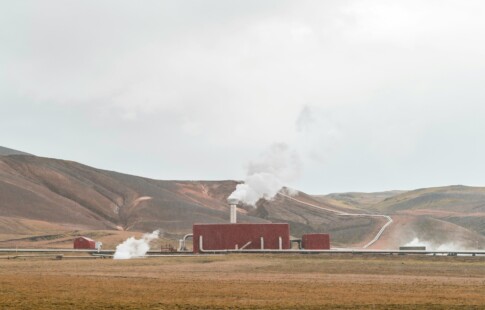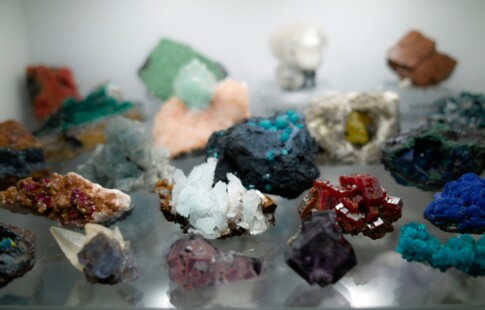
Decarbonization Technology: 7 Innovations Fighting for the Planet
We are reader-supported. When you buy through links on our site, we may earn affiliate commission.
Eliminating or reducing carbon dioxide emissions is fundamental to meeting net zero goals outlined in The Paris Agreement. Current efforts, though commendable, are not enough — with global average atmospheric CO2 levels hitting new highs every year. As the world continues to produce carbon faster than nature can absorb it, decarbonization technology can augment existing infrastructure and initiatives to minimize emissions and tackle global warming.
Here are seven innovations deployed on the frontline against climate change.
1. Carbon Capture Technologies
Industrial processes account for over 21% of global carbon emissions yearly. Carbon capture systems remove CO2 produced in these sectors before they are released into the atmosphere and contribute to global warming. The carbon is then compressed, transported through underground pipelines and stored in geological formations.
Some technologies go beyond merely capturing and storing CO2 to repurposing it. For example, the Bioenergy with Carbon Capture and Storage system extracts carbon from biomass energy production and uses it to generate electricity. This innovation not only offsets CO2 production but also provides a low-carbon energy source which can be utilized across various industries.
2. Direct Air Capture (DAC)
Unlike carbon capture systems, which are generally deployed at the point of emissions, such as steel factories and power plants, DAC technologies extract CO2 directly from the atmosphere at any location. They’re essentially the mechanical equivalent of trees, playing a pivotal role in driving a decarbonized economy.
DAC systems utilize high-powered fans to pull in air and separate the carbon dioxide from other atmospheric molecules. The isolated CO2 is then converted into a liquid, which can be pumped underground to be safely and permanently stored or used as a feedstock for products. Twenty-seven active DAC facilities worldwide today capture 0.01 million tons of CO2 annually.
3. Building Automation Systems
These technologies encompass a wide range of smart sensors and automation systems that monitor and adjust energy use for maximum efficiency. Converging HVAC, lighting, thermostats and other systems into a single network infrastructure helps reduce the emissions from buildings, which account for nearly three billion tons of emissions each year.
Leveraging these technologies can also provide significant cost-saving advantages by cutting the energy needed to keep the structure operational. One estimate finds that building automation systems can improve heating and cooling efficiency by 20%, saving owners up to $3.1 trillion in lifetime operating costs.
4. Digital Twins
A digital twin is a digital representation of a physical object, process or service. This innovation relies on real-time data flows and machine learning to assess what is happening with a physical object. It can also predict how a product or process will perform for better decision-making. As a decarbonization technology, digital twins can provide asset teams with details on real-time operations to pinpoint areas of excessive emissions and curb them.
According to a report by Ernst and Young, digital twins deployed in a facility reduced 9.61 kilotons of CO2 emissions and provided S$4.7 million of cost savings over a ten-year period. Digital twin technology can be applied to new and existing processes, increasing the potential for improved global decarbonization.
5. Waste Robotics
The waste sector is responsible for 20% of methane emissions worldwide. This gas is around 80 times more potent than CO2 and contributes greatly to rising global temperatures. Methane emissions stem from the breakdown of organic waste in landfills and dump sites.
Waste robotics utilizes advanced sensors, cameras and AI to streamline and automate recycling. This reduces the margin for error and the amount of organic waste sent to landfills. Moreover, robots do not suffer the risks of handling hazardous materials, making the sorting and recycling processes considerably safer and more efficient.
6. Electric Vehicles
Transportation is one of the largest carbon-emitting sectors due to the heavy reliance on fossil fuels. Electrification can help address this issue and improve decarbonization efforts across multiple industries. Studies show a 1% increase in the sale of EVs can reduce CO2 emissions by 0.096% in the immediate vicinity.
However, the adoption of electric vehicles has been slow amid concerns about cost and the fact that charging EV batteries requires fossil-fueled power. The emergence of fuel-cell electric vehicles is proving to be a practical solution. These systems are powered by hydrogen and emit only water vapor and warm air. Plus, they can be attached to the EV, much like a petrol or diesel tank is attached to regular vehicles, ensuring a steady power supply even over long distances.
7. Low Carbon Cement and Concrete Alternatives
Cement manufacturing produces roughly 8% of global CO2 emissions and is one of the leading culprits behind the construction industry’s massive ecological footprint. To that end, the Global Cement and Concrete Association has set a target of 20% CO2 reduction per metric ton of cement by 2030
However, decarbonizing cement is particularly difficult because its production process directly releases CO2. New technologies like CarbonCure can help address this issue. This innovative solution involves injecting captured carbon dioxide into concrete, which reacts with calcium ions to form calcium carbonate. This hardens the concrete while eliminating the CO2 from the production process, resulting in low-carbon cement.
Decarbonization Technology Implementation Challenges
The most significant barrier to the widespread adoption of these technologies is cost. For example, the World Economic Forum estimates the cost of extracting CO2 using DAC systems at up to $1,000 per ton. This amount will need to drop significantly if countries relying on this technology are to reach their carbon neutrality goals by 2050.
Similarly, annual capital spending on carbon-free cement production will need to reach $60 billion if the industry is to make any reasonable dent in its environmental footprint.
Another critical challenge is the lack of awareness. Many people are simply oblivious to the existence of these technologies and the role they play in decarbonization. However, the prevailing sentiment toward global sustainability has largely been positive in recent years, so it’s only a matter of time.
Harness Decarbonization Technology for a Sustainable Future
Technology is a powerful force in driving sustainability. Select innovations are already supporting decarbonization globally and driving significant carbon emissions reductions. As these technologies evolve, they will drive further innovations and investments, spurring the transition toward a net zero future.
Share on
Like what you read? Join other Environment.co readers!
Get the latest updates on our planet by subscribing to the Environment.co newsletter!
About the author

Jane Marsh
Starting from an early age, Jane Marsh loved all animals and became a budding environmentalist. Now, Jane works as the Editor-in-Chief of Environment.co where she covers topics related to climate policy, renewable energy, the food industry, and more.





